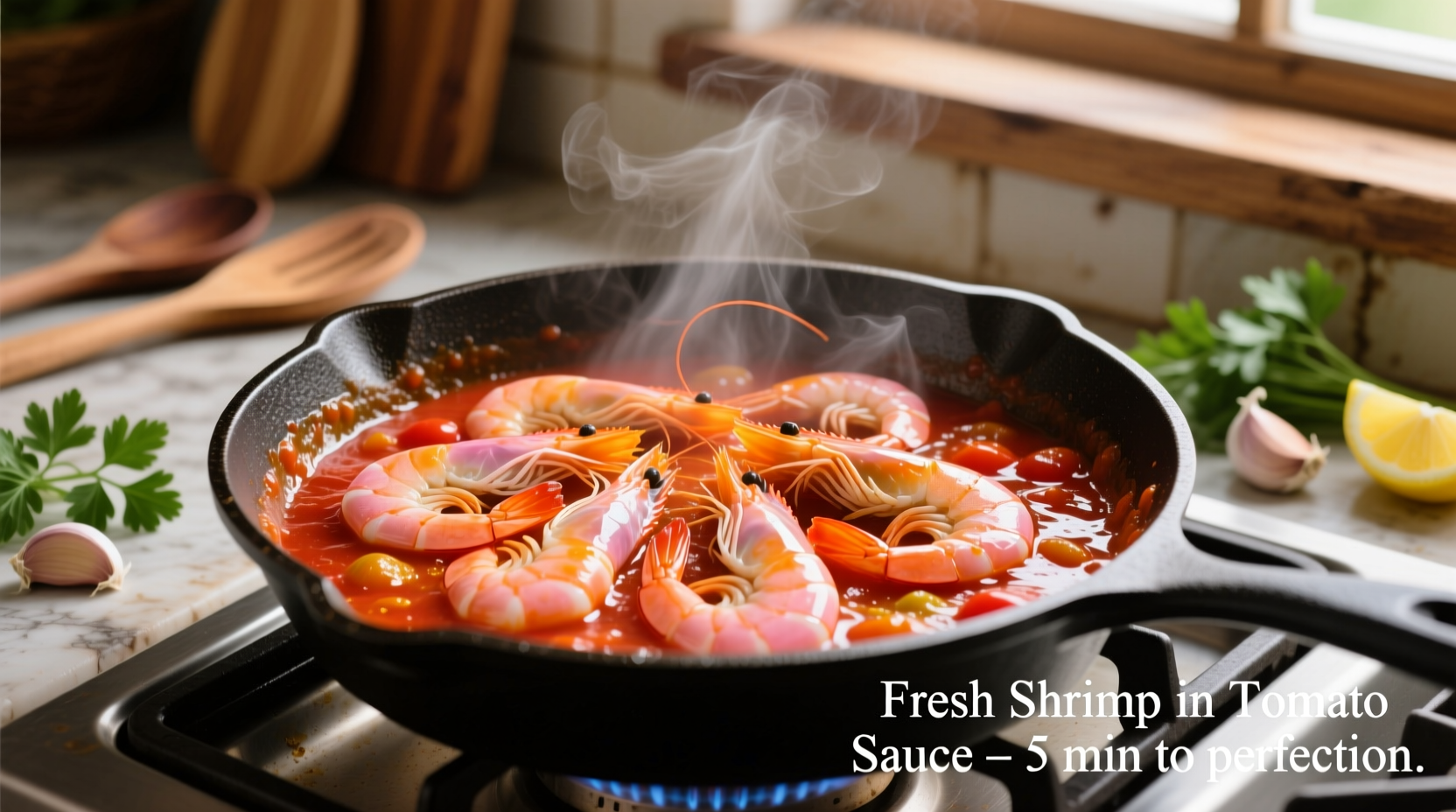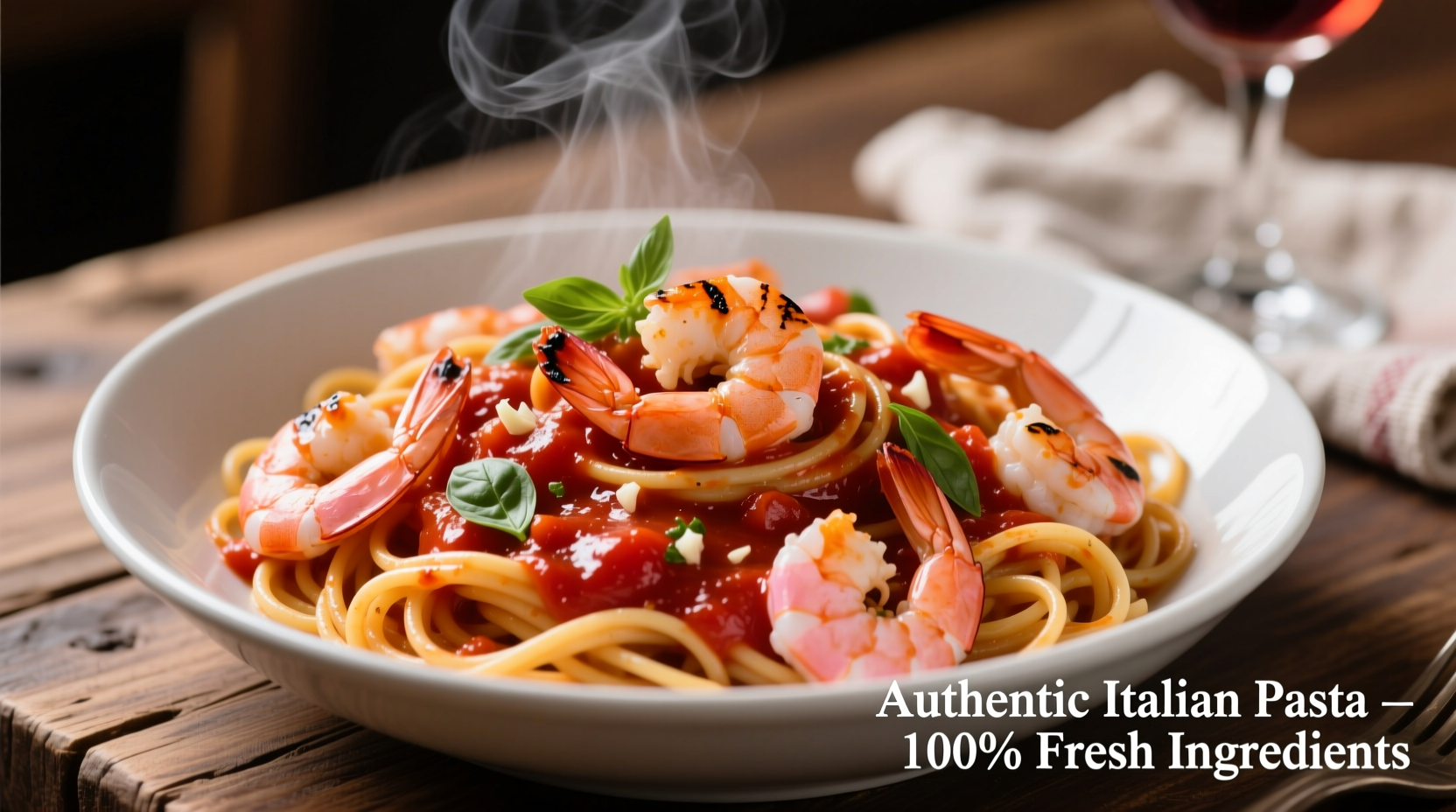Get restaurant-quality shrimp pasta with tomato sauce in just 20 minutes with this chef-tested recipe. Perfectly cooked shrimp, balanced acidity, and rich umami depth—no overcooked seafood or bland sauce ever again.
There's nothing quite like a plate of perfectly executed shrimp pasta with tomato sauce. When done right, it's a harmonious blend of sweet seafood, bright acidity, and rich umami that comes together faster than delivery. Yet so many home cooks struggle with rubbery shrimp, watery sauce, or flavorless results. The secret isn't complicated equipment—it's understanding the precise timing and technique that transforms simple ingredients into something extraordinary.
Why This Recipe Works Every Time
Professional kitchens achieve consistent results through controlled variables. This method addresses the three critical failure points in shrimp pasta preparation:
- Shrimp texture—cooking shrimp separately prevents overcooking
- Sauce depth—using both canned tomatoes and tomato paste creates layered flavor
- Emulsion—reserving pasta water helps bind sauce to noodles
| Tomato Product | Best For | When to Avoid |
|---|---|---|
| Canned whole tomatoes | Rich base sauces needing texture | Quick weeknight meals (requires breaking down) |
| Canned crushed tomatoes | Balanced texture for most pasta dishes | When smooth texture is essential |
| Tomato passata | Silky smooth sauces | When tomato chunks are desired |
According to the Culinary Institute of America's research on Mediterranean cooking techniques, properly balanced tomato sauces contain a 3:1 ratio of acidity to sweetness. This explains why many homemade versions fall flat—they lack either sufficient acid balance or complementary sweet elements.
Essential Ingredients Checklist
Quality ingredients make the difference between ordinary and exceptional shrimp pasta with tomato sauce. Here's what you need:
Seafood Selection Guide
Not all shrimp are created equal for pasta dishes:
- Size matters: 21-25 count per pound works best (large enough to stay juicy, small enough to cook quickly)
- Freshness test: Should smell clean and oceanic, never ammonia-like (USDA Food Safety Inspection Service guidelines)
- Prep secret: Pat completely dry before cooking—moisture is the enemy of proper searing
Tomato Sauce Foundation
The base of your sauce determines final flavor complexity:
- 28 oz high-quality canned San Marzano tomatoes (DOP certified preferred)
- 2 tbsp double-concentrated tomato paste
- 1 small yellow onion, finely diced
- 3 garlic cloves, minced
- 1/4 cup fresh basil, chiffonade
- 1/2 tsp red pepper flakes (optional)

Step-by-Step Cooking Process
Follow this professional kitchen workflow for perfect results every time:
Preparation Phase (5 minutes)
- Bring 4 quarts of well-salted water to boil for pasta
- Pat shrimp completely dry with paper towels
- Toss shrimp with 1/4 tsp salt and light coating of cornstarch (helps sear)
- Prepare mirepoix: finely dice onion, mince garlic, chop basil
Cooking Sequence (15 minutes)
- Cook pasta: Add 12 oz spaghetti to boiling water, cook 1 minute less than package directions
- Make sauce base: Sauté onion in 2 tbsp olive oil over medium heat until translucent (3-4 minutes)
- Build flavor: Add garlic and red pepper flakes, cook 30 seconds until fragrant
- Tomato foundation: Stir in tomato paste, cook 2 minutes to deepen flavor
- Liquid component: Add canned tomatoes with juices, break up with spoon
- Simmer: Cook sauce 5 minutes while reducing slightly
- Shrimp sear: Heat 1 tbsp oil in separate pan, cook shrimp 1-1.5 minutes per side until just opaque
- Combine: Add drained pasta to sauce, toss with 1/2 cup pasta water to emulsify
- Finish: Gently fold in shrimp and fresh basil, cook 1 minute to marry flavors
Avoid These Common Mistakes
Even experienced cooks make these critical errors with shrimp pasta with tomato sauce:
- Adding shrimp directly to sauce: Causes overcooking and cloudiness from proteins leaching into sauce
- Using cold pasta water: Prevents proper emulsification—always use hot starchy water
- Over-reducing sauce: Tomatoes break down and become bitter when cooked too long
- Adding cheese: Traditional Italian preparation avoids cheese with seafood pasta
Food science research from America's Test Kitchen shows that cornstarch-coated shrimp develops a superior sear while maintaining interior moisture—this small step makes a dramatic difference in texture.
Customization Options
Adapt this shrimp pasta with tomato sauce recipe to your preferences:
Dietary Modifications
- Gluten-free: Use high-quality rice or chickpea pasta, cook separately and add at end
- Lower carb: Substitute zucchini noodles, add after sauce is complete
- Dairy-free: Recipe is naturally dairy-free (avoid common Parmesan mistake)
Flavor Variations
- Mediterranean: Add 1/4 cup pitted Kalamata olives and 2 tbsp capers
- Creamy version: Stir in 1/4 cup heavy cream at end for richer texture
- Spicy arrabbiata: Double red pepper flakes and add 1/2 tsp smoked paprika
Storage and Reheating Tips
While best served fresh, leftovers can be stored properly:
- Store components separately: sauce and shrimp in one container, pasta in another
- Refrigerate for up to 2 days in airtight containers
- Reheat sauce gently, add cooked pasta and shrimp at end to prevent overcooking
- Never freeze cooked shrimp—it becomes rubbery upon thawing
According to culinary safety guidelines from the USDA Food Safety Inspection Service, cooked shrimp should be consumed within 3-4 days when properly refrigerated at 40°F or below.
Perfect Pairings
Complete your shrimp pasta with tomato sauce meal with these professional recommendations:
- Wine: Crisp Italian white like Vermentino or dry rosé
- Side: Simple arugula salad with lemon vinaigrette
- Garnish: Fresh basil ribbons and high-quality extra virgin olive oil
- Timing: Serve immediately—seafood pasta doesn't wait











 浙公网安备
33010002000092号
浙公网安备
33010002000092号 浙B2-20120091-4
浙B2-20120091-4